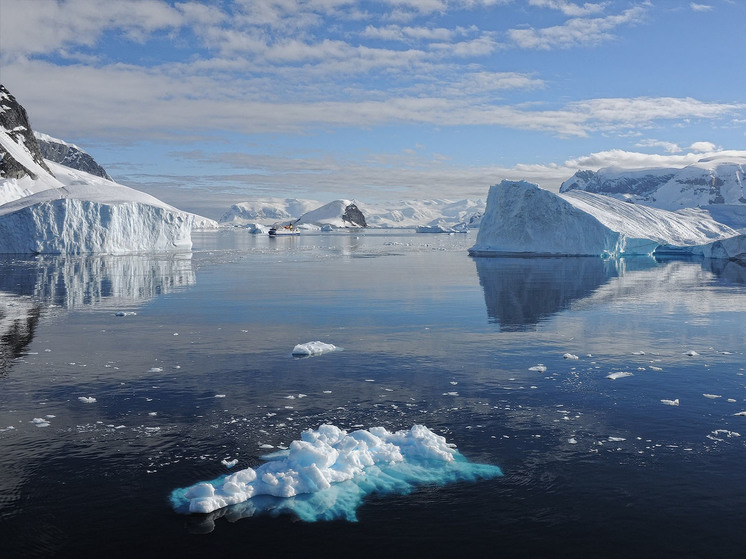Extreme events on icy continent inevitable due to drastic climate change
Scientists warn that without decisive action it is «almost certain» that extreme events in Antarctica will worsen. Record low levels of sea ice, the collapse of ice shelves and surface temperatures up to 38.5°C above average were named as dangerous problems in a new review by scientists.
 < /span>
< /span>
“It is virtually certain” that future extreme events in Antarctica will be worse than the extraordinary changes already observed, according to new scientific warning highlighting the need for immediate and decisive action to limit global warming.
A new survey gathers data on the vulnerability of Antarctic systems, highlighting recent extreme events such as record low sea ice levels, the collapse of ice shelves and surface temperatures of up to 38.5°C above average over East Antarctica in 2022 — the largest the world's largest heatwave ever recorded.
According to study co-author Dr Caroline Holmes, a polar climatologist with the British Antarctic Survey, Antarctic sea ice rates, which fluctuate between a February low and a September maximum every year, “ have been declining in recent years.”
“One of the clear indicators of how things are changing is that the summer low has broken a new record three times in the last seven years,” Dr. Holmes said at a press briefing.
July 2022 sea ice extent reached an all-time low for this time of year, but a new record was broken in July of this year — one that was «three times further from the average than what we've seen before,» said Caroline Holmes.
< p>According to Associate Professor Anna Hogg of the University of Leeds, co-author of the study, the amount of Antarctic land ice, which contributes to sea level rise when it melts, has also decreased since the 1990s.
Between 1992 and 2020, the Antarctic and the Greenland Ice Sheets have contributed to a 2.1cm rise in global mean sea levels.
According to Anna Hogg, the rate of ice loss in Antarctica is “in line with the worst-case scenario” for projected ice loss under scenarios with high greenhouse gas emissions. And this, she notes, despite the fact that global emissions are currently being tracked closer to the intermediate level of emissions.
The ice shelves that fringe three-quarters of the Antarctic coastline have also retreated in recent decades. The study notes that large sections of the Larsen-A, Larsen-B, and Wilkins ice shelves “collapsed catastrophically” in 1995, 2002, and 2008, respectively. Ten Antarctic ice shelves have also experienced major ice melt since 2009.
“We should be deeply concerned about the state of Antarctica's environment in the coming years in the face of continued burning of fossil fuels,” said study lead author Professor Martin Siegert of the University of Exeter.
“This is the most extreme natural laboratory on the planet. Our ability to measure and observe is very difficult… but we really need to put more effort into understanding the processes that cause these extreme events and their relationship.”
The study notes that, given that additional global warming of at least 0.4°C is now imminent, to limit warming to 1.5°C under the Paris Agreement, “it is virtually certain that future extreme events in Antarctica will more pronounced than those observed to date.”
Professor Tim Naish, Director of the Center for Antarctic Research at the University of Victoria at Wellington, who was not involved in the study, said that the increasing frequency of extreme events in Antarctica showed that “response Policies have so far been inadequate to deal with the climate crisis.”
“Antarctica is experiencing more and more extreme events,” he said in a statement. “In some cases, we are dangerously close to tipping points that will lead to irreversible changes with irreversible consequences for future generations.”
The study was published in the journal Frontiers in Environmental Science.


